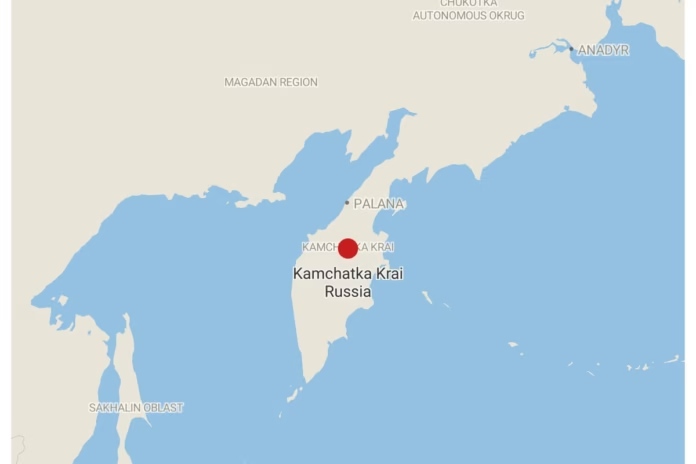Strongest Aftershock Since July’s Historic 8.8 Quake
A powerful 7.4-magnitude earthquake struck off the eastern coast of Russia’s Kamchatka Peninsula on Saturday afternoon, marking the most significant aftershock since the catastrophic 8.8-magnitude earthquake that shook the region just over a month ago.
According to the United States Geological Survey (USGS), the tremor hit at approximately 2:37 p.m. local time, with its epicenter located around 111 kilometers east of Petropavlovsk-Kamchatsky—the peninsula’s capital city and home to nearly 165,000 people. The earthquake occurred at a depth of 39.5 kilometers beneath the North Pacific Ocean, triggering initial tsunami warnings and prompting brief evacuations throughout the region.
Immediate Tsunami Alerts and Regional Response

Following the earthquake, the Pacific Tsunami Warning Center (PTWC) issued an urgent alert warning of potential waves reaching up to one meter along the nearby Russian coastline. Residents were advised to evacuate low-lying coastal areas and seek higher ground.
In Petropavlovsk-Kamchatsky, locals rushed out of buildings, shopping malls, and offices as emergency sirens echoed across the city. Authorities coordinated swift evacuations to minimize risk. Fortunately, about an hour later, the PTWC withdrew the warning after determining that no dangerous tsunami waves would form.
Despite the lifted alert, officials urged residents to remain cautious as aftershocks could continue over the coming days. Disaster response teams are now assessing infrastructure for any potential damage to roads, power lines, and public facilities.
Aftershock of July’s Devastating Earthquake
Experts confirmed that Saturday’s earthquake was a direct aftershock of the massive July 29, 2025, 8.8-magnitude quake—one of the ten strongest earthquakes ever recorded globally. The July event caused significant ground shaking across the Kamchatka region and triggered a Pacific-wide tsunami, with waves reaching up to four meters high.
The USGS reported that the latest tremor resulted from shallow reverse faulting, a tectonic process where one block of Earth’s crust is pushed up over another. Such events are common after major quakes but can still pose risks to already-stressed infrastructure.
Global Seismic Context

The July 2025 earthquake was the most powerful worldwide since the 2011 Tōhoku earthquake and tsunami that devastated northeastern Japan. The scale of seismic activity on the Kamchatka Peninsula has drawn attention from seismologists globally, as the region sits on the Pacific Ring of Fire, a seismically active zone responsible for nearly 90% of the world’s earthquakes.
Saturday’s event has renewed concerns about ongoing seismic hazards in the region and the potential for further large aftershocks in the coming months. Researchers are closely monitoring the area for changes in fault stress and possible volcanic activity, as Kamchatka is also home to some of the world’s most active volcanoes.
Local Impact and Safety Measures
While no major damage or injuries have been reported so far, authorities are inspecting bridges, ports, and other critical infrastructure to ensure safety. Residents have been urged to keep emergency kits ready, stay updated on official alerts, and prepare for possible power outages or communication disruptions in case of further seismic activity.
Schools and workplaces remained closed for the remainder of the day, and emergency drills have been scheduled for the upcoming week to refresh evacuation protocols.
International Monitoring and Support
Global earthquake monitoring agencies, including the USGS and Japan Meteorological Agency, continue to track seismic activity in the North Pacific region. Neighboring countries such as Japan and the United States (particularly Alaska and Hawaii) are on heightened alert for any potential tsunami risk from future quakes.
Disaster preparedness organizations have praised the quick response of Russian authorities, noting that early warning systems and rapid evacuations helped prevent panic and ensured public safety.
Ongoing Risk and Preparedness
Experts emphasize that strong aftershocks may continue for weeks or even months following a massive quake like the one in July. Residents are advised to remain vigilant, avoid unnecessary travel along coastal zones during seismic alerts, and follow government safety recommendations.
The Kamchatka Peninsula, known for its volcanic landscape and remote location, remains one of the most seismically active regions on Earth. Saturday’s 7.4-magnitude earthquake serves as a stark reminder of the power of natural forces and the importance of preparedness in high-risk areas.
Sources: AnewZ

